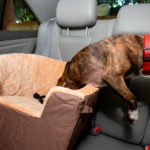
Operating remote-controlled vehicles is one of the favourite pastime activities for adults and children of all ages. Commonly known as RC vehicles, these scaled-down versions are controlled with a remote, and you can drive them in a wide range of environments. However, different RC vehicles are meant for different types of driving and terrain.
So, if you’re looking for something that can handle the asphalt, and you don’t intend on driving it anywhere else except smooth surfaces, you’ll probably want a road RC vehicle. If you want to tackle some uneven terrain, on the other hand, you’d be better suited with an RC off road rally car or an RC truck. That being said, getting the right type of RC ride is essential to enjoying the hobby. These units come in a wide range of configurations, so choosing the right one requires some careful consideration, especially if it’s your first time buying.
Types of RC Vehicles

There are quite a few different types of RC vehicles to choose from, including RC road cars, RC trucks, RC buggies, and RC off road rally car models. However, most types are categorised under three basic categories – RC cars, buggies and trucks. RC cars are the fastest RC vehicles, but they’re meant for driving over smooth surfaces. They can handle sharp turns very well, so you can speed around obstacles and race with friends. RC trucks, on the other hand, are ideal for off road use. However, there are also off road RC car models that don’t feature as large tyres as trucks, but they can still drive over rough terrain. Then, there are the RC buggies. They provide you with the best of both worlds – you can drive them both on and off the road. However, they aren’t as fast as cars, and can’t handle rocky terrain and obstacles like RC trucks.
RC Vehicle Price

RC vehicles can be affordable, but they can also be quite expensive depending on their capabilities. If you’re buying a model for your kid, it’s better to start with something that’s inexpensive, as you kid might not stick to the hobby, or might break the vehicle. More experienced or mature riders may want something that’s more durable and better-performing, so it pays off to get a high-quality model. Basic RC vehicles can cost up to $50, but you can’t expect them to reach high speeds and handle as well as advanced models that cost a few hundred dollars. However, they are still suitable for younger hobbyists who’ll still find a top of enjoyment out of them. The advanced, more expensive models come with a wide range of features, and they can handle more abuse. Some of the features may include 4WD, brushless motors, quality suspension, etc. However, keep in mind that more expensive models with more parts may require extra maintenance and upkeep.
RC Vehicle Power Source

RC vehicles can be powered either by a battery or nitro fuel. Electric cars are the most popular option for the majority of RC hobbyists, as they’re powerful, don’t require as much maintenance, and don’t release any toxic fumes when used, making them the only viable option for indoor use. All you have to do to get an electric RC vehicle running is put in the battery. Electric models are also generally more affordable than nitro fueled models. On the other hand, nitro-powered RC vehicles are slightly more powerful and produce more noise, which many enthusiasts prefer. You’ll have to buy nitro fuel, and spend more time tinkering with it.
RC Vehicle Scale

This refers to the the size of the RC vehicle in relation to the size of the real life model it’s replicating. Generally, RC vehicles are available in scales ranging from 1/5 to 1/32. The most popular scales are 1/5, 1/8, 1/10 and 1/16. The larger the model is, the more expensive it will be. But at the same time, the more replaceable parts and easier to maintain it will be. When picking a scale, you’ll have to consider where you’ll be driving and storing your RC vehicle, and of course, your budget.
RC Transmitter

RC vehicles can be controlled either with a stick or pistol grip style controller. Stick controllers are similar to PS or Xbox controller, and they’re recommended for beginners, whereas pistol grip controllers, as their name implies, are similar to a pistol and you have to press the trigger to make your vehicle go forward. Pulling the trigger harder makes it run faster. To maneuver the vehicle, you’ll have to use your other hand and spin a small wheel, similarly to the steering wheels of real vehicles. Pistol grip controllers allow you to control your vehicle better, but they have a steeper learning curve.













